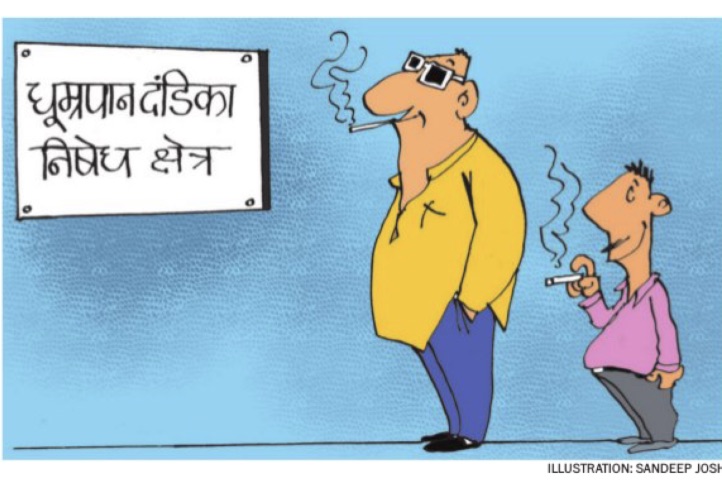
Awaiting an appointment, I was roaming the corridors of a premium medical college in the capital. A tired, old man hobbled up to me and asked if I could direct him to the TB ward. I told him he was standing right next to it and pointed at the signboard. He haltingly read ‘ phoophsiya yakshma vibhag’ written under Department of Pulmonary Tuberculosis (T.B) and remained clueless. I pitied his plight. He could read the Hindi script ( Devanagari lipi) but not understand what he read. And although he might have understood it in English, he couldn’t decipher the alphabets. Sadly, he wasn’t alone in his ignorance of the ‘ mother tongue’. Although I take great pride in my ‘ sahityik’ Hindi, phephre ki tapedik or kshay rog is the best translation I can do. I have never heard the term ‘Phoophsiye yakshma’ before.
After he left I looked around and came across some other unfamiliar words. I could guess that hridyachikitsavigyan meant Cardiology, but dhegvigyan and antehsrav vigyan were totally alien. They were certainly not my mother tongue, this, when my mother belongs to the Hindi speaking cow belt!
The problem is, Hindi is not one but three languages, the one we speak and understand (a mix of Hindi, English, Urdu and local lingo) the one we read or write in ( sahityik/ literary version ) and the sarkari official kind ( with never heard words). In an effort to protect its sanctity the custodians often forget that the primary function of any language is to communicate. If most people don’t understand it, its purpose is defeated. It is reduced to an adornment, merely decorative in function.
I recount another incident to make my case. My nurse showed me a letter her daughter had received from an institute where she was pursuing stenography. “Tankan aivam ashulipi pariksha ke pariksharthi swagat-patal par panjikaran karayenge,” it proclaimed haughtily. After using the online shabdkosh I was able to translate “Typing aur shorthand test ke ummeedwar reception par registration karayenge.” Phew!
Lingual vs practical has always been a dilemma and it’s intensity is felt more acutely in the present milieu. To make people understand vs to maintain the sanctity of our language maybe a difficult choice for some. But for ordinary people pragmatism will always score over misconceived patriotism. For one, Hindi is not our national language. No language has been granted this status by our constitution. Hindi along with English is our official language and one of the twenty two scheduled languages of the Republic of India. Like other Indo Aryan languages it is a direct descendant of Vedic Sanskrit, which was the language of the upper caste. Manak Hindi was a logical step to let go of the complexity of Sanskrit and create a simple language for the masses.
Now in an effort to preserve its purity, Sanskrit components are being used to coin new words as replacement for foreign terms ( tadbhav shabd) . Most of these neologisms are calques of English words which are already deeply engraved in our vocabulary. Trying to replace telephone with doorbhash and engineer with abhiyanta are such examples. I wonder where it will stop? For it is impossible to imagine my duniya without dil, dimag and dost, all words of Urdu descent.
Another Hindi week concluded with the state debating steps to encourage usage of our mother tongue. The simplest solution is to simplify it! But as I type this on the Kunjipatal of my Sangpak to reach the editor through the antarjalkram, I worry, will my idea get lost in translation?
( published in my column in the Tribune on 29/9/2018)
.
.
Sarkari tantra kab te samjhega ki aise Hindi promote nahin ho sakti.
The language that they use for sign boards is too difficult to understand even for the educated ones , leave aside the semi literates ….